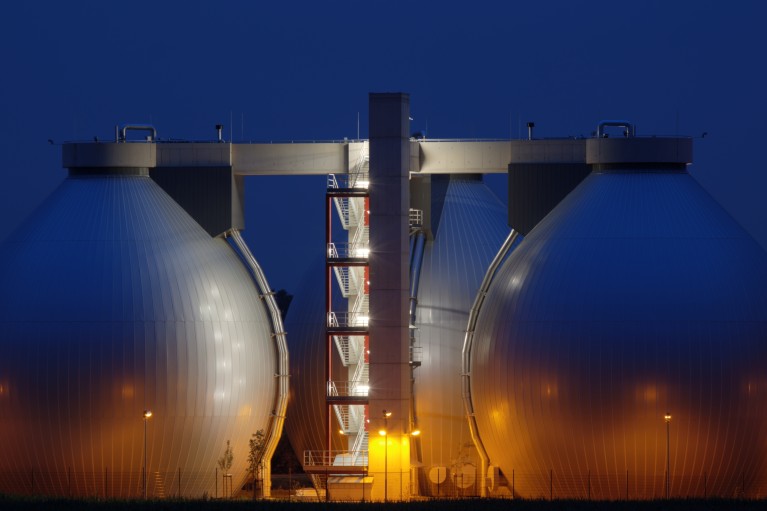
Digester towers of a sewage biogas plant. Credit: ThomasSaupe/ iStock / Getty Images Plus.
Natural gas is a widely used fossil fuel, and the climate crisis has made it a target for replacement with renewable alternatives. One option is biomethane, that can be derived from biomasses such as sewage sludges and agricultural residues, with the help of microbes such as bacteria and archea. Burning biomethane emits carbon dioxide, but because the same amount is absorbed by plants grown to produce it, the process aims to be carbon-neutral. Achieving efficient, large-scale production is still a challenge, due to the complex interaction between biomasses and microbe populations.
By combining mathematical methods with microbiology and biochemistry, a group of scientists from Italy and Finland have investigated how to make the production of biomethane more predictable and efficient. In particular, the study1 aimed to improve the Anaerobic Digestion Model 1 (ADM1), a mathematical tool that is used to simulate microbial anaerobic digestion, a key process in industrial research on biomass recycling.
Researchers studied microbes used by industrial processes, where they are cultivated in bioreactors harnessing their anaerobic digestion products. These microbes exist in a sort of miniaturized ecosystem, where each species carries out different interconnected chemical reactions. Their biomethane production follows four steps: polymers such as carbohydrates are broken by water in hydrolysis, then fermented into alcohols and CO2, converted into carboxylic acids and finally rearranged in biomethane, CH4.
“We used analytical methods borrowed from engineering to address biological questions” says Stefano Bertacchi from University of Milano-Bicocca, lead author of the study. “It was a very exciting transdisciplinary approach”. Using thermodynamic analysis and mathematical optimization tools, the scientists updated the ADM1 model to create a better digital simulation of how bacteria and archea produce biomethane by digesting biomass, looking for the parameters in the model’s equations that can be more easily modified to obtain the maximum yield increase.
In particular, they discarded options such as increasing the initial organic compound amount, after observing that an overload of the hydrolysis phase leads to a yield decrease. Tweaking the decomposition rate through a preliminary treatment of organic compounds proved to be a more suitable option. “We found that the optimal yield increase could be possibly obtained pre-digesting the biomass” Bertacchi says.
